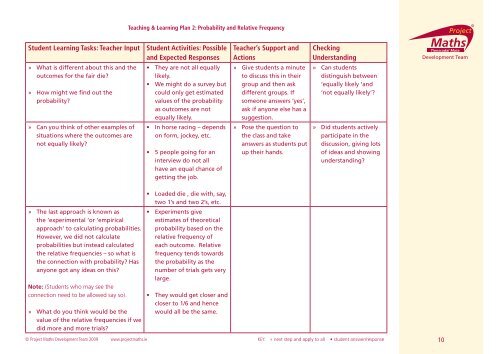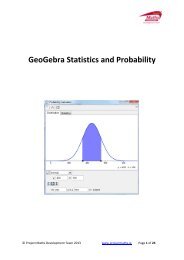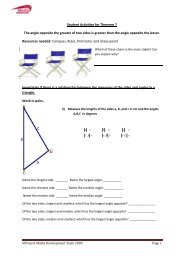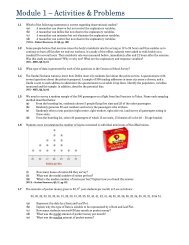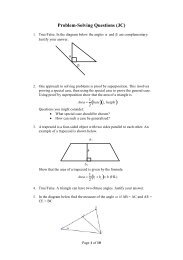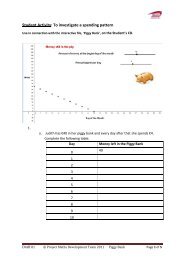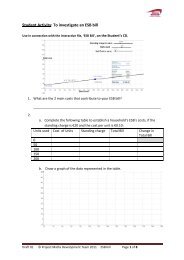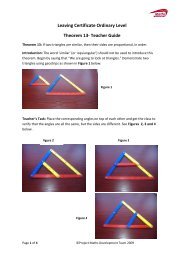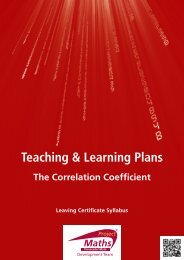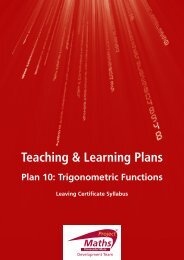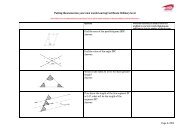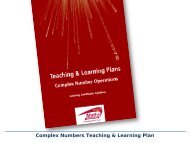Teaching & Learning Plans - Project Maths
Teaching & Learning Plans - Project Maths
Teaching & Learning Plans - Project Maths
You also want an ePaper? Increase the reach of your titles
YUMPU automatically turns print PDFs into web optimized ePapers that Google loves.
<strong>Teaching</strong> & <strong>Learning</strong> Plan 2: Probability and Relative Frequency<br />
Student <strong>Learning</strong> Tasks: Teacher Input<br />
»» What is different about this and the<br />
outcomes for the fair die?<br />
»» How might we find out the<br />
probability?<br />
Student Activities: Possible<br />
and Expected Responses<br />
• They are not all equally<br />
likely.<br />
• We might do a survey but<br />
could only get estimated<br />
values of the probability<br />
as outcomes are not<br />
equally likely.<br />
Teacher’s Support and<br />
Actions<br />
»» Give students a minute<br />
to discuss this in their<br />
group and then ask<br />
different groups. If<br />
someone answers ‘yes’,<br />
ask if anyone else has a<br />
suggestion.<br />
Checking<br />
Understanding<br />
»» Can students<br />
distinguish between<br />
‘equally likely ‘and<br />
‘not equally likely’?<br />
»» Can you think of other examples of<br />
situations where the outcomes are<br />
not equally likely?<br />
• In horse racing – depends<br />
on form, jockey, etc.<br />
• 5 people going for an<br />
interview do not all<br />
have an equal chance of<br />
getting the job.<br />
»» Pose the question to<br />
the class and take<br />
answers as students put<br />
up their hands.<br />
»» Did students actively<br />
participate in the<br />
discussion, giving lots<br />
of ideas and showing<br />
understanding?<br />
»» The last approach is known as<br />
the ‘experimental ‘or ‘empirical<br />
approach’ to calculating probabilities.<br />
However, we did not calculate<br />
probabilities but instead calculated<br />
the relative frequencies – so what is<br />
the connection with probability? Has<br />
anyone got any ideas on this?<br />
Note: (Students who may see the<br />
connection need to be allowed say so).<br />
»» What do you think would be the<br />
value of the relative frequencies if we<br />
did more and more trials?<br />
• Loaded die , die with, say,<br />
two 1’s and two 2’s, etc.<br />
• Experiments give<br />
estimates of theoretical<br />
probability based on the<br />
relative frequency of<br />
each outcome. Relative<br />
frequency tends towards<br />
the probability as the<br />
number of trials gets very<br />
large.<br />
• They would get closer and<br />
closer to 1/6 and hence<br />
would all be the same.<br />
© <strong>Project</strong> <strong>Maths</strong> Development Team 2009 www.projectmaths.ie KEY: » next step and apply to all • student answer/response 10


